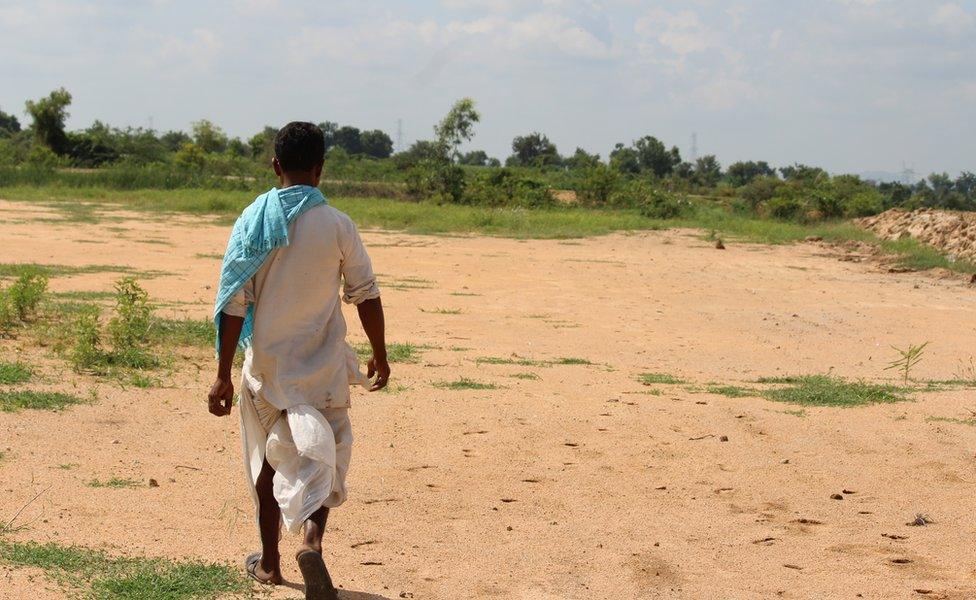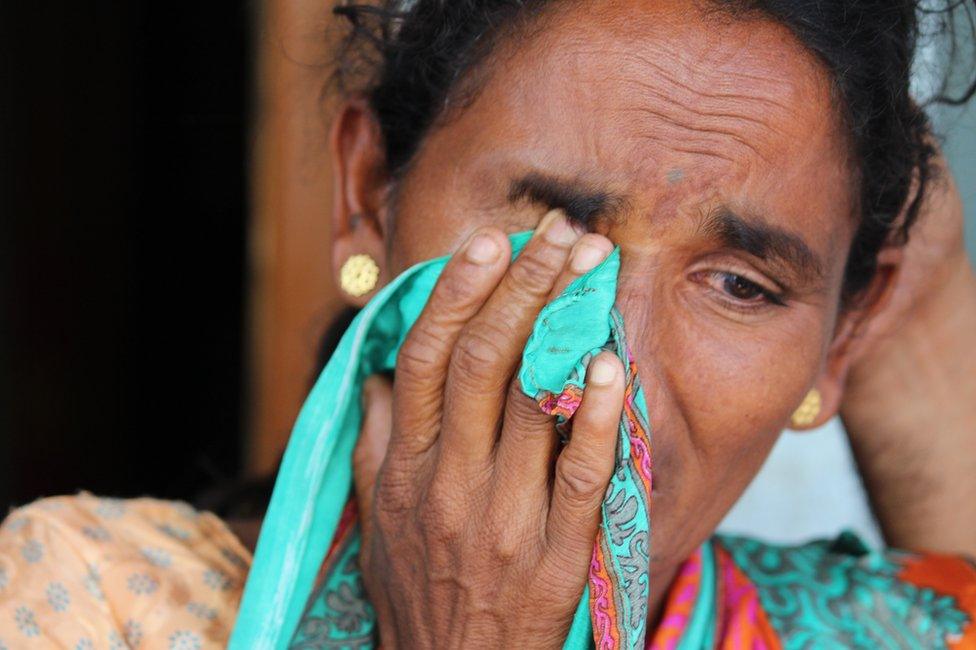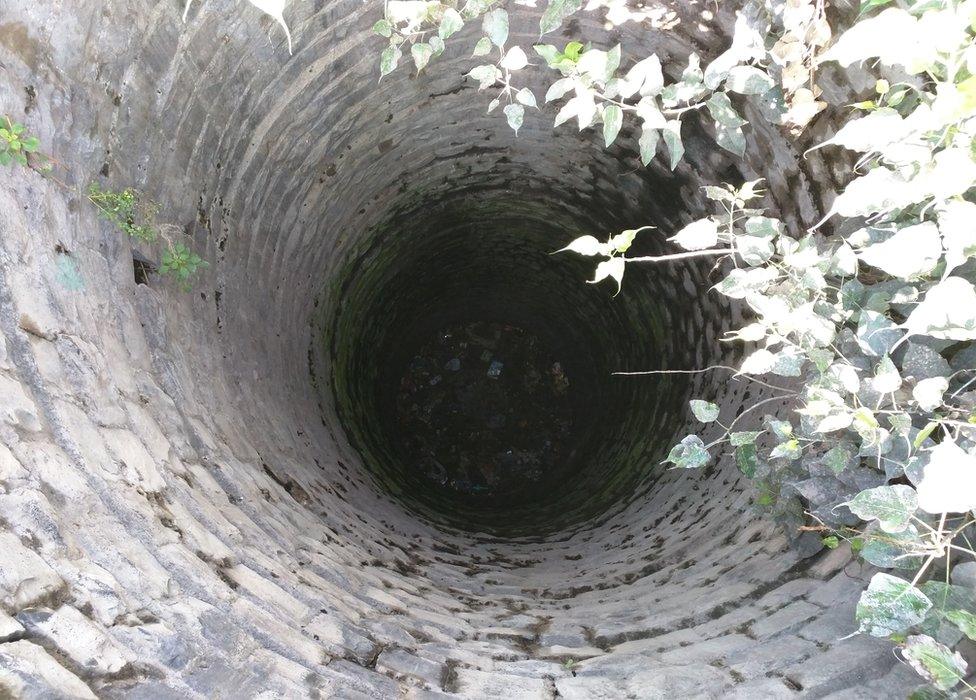How drought is changing rural India
- Published

More than 300 million people in 256 districts are affected by drought in India
More than 300 million people living in 256 districts are affected by drought in India after two years of sparse monsoon rains. BBC Hindi's Ajay Sharma travels through seven states to find that the drought has changed India's villages and their residents.
When I started my nearly 7,000km (4,349 miles)-long road journey from the southern state of Karnataka in October, my brief was simply to report on how poor rains were changing India's rural landscape.
I had no inkling that I would be witnessing the making of a drought, that would change a country and its people.
The change is writ large in the wrinkled face of the 101-year-old widow, Hanumanthi: a face that symbolises the endless struggle of India's rural poor.
Is India facing its worst-ever water crisis?
Searching for water in drought-hit India
I met her in Hunchinal village in the southern state of Karnataka.
Hanumanthi, who owns a small patch of land, told me she was going to "die soon because there was nothing to eat".
She told me that she had nothing, and nobody, to care for. There were no tears in her eyes, and no bitterness in her voice.
Her neighbours said she could survive but only if the rains came. But the weather gods had not relented for three consecutive years, so these were high hopes indeed.
It's been seven months since I met her, and I have no idea what happened to Hanumanthi.

Hanumanthi told me she was going to 'die soon because there was nothing to eat'

India is heavily dependant on monsoon rains, which have been poor for two years in a row
But I knew then that what I saw on my journey was a chilling warning of what lay in store for India's farmers and their families.
In the southern state of Telangana, Anjamma, a 29-year-old widow, told me how her husband Ailappa killed himself because he could not repay a debt of around $400.
He took this money for the revival of his cotton crop, but it failed.
She told me he was running a high fever, and didn't tell her that he had drunk insecticide.
This is a story I heard over and over again. The names change, but little else. The vicious cycle of drought and debt has consumed India's poor and marginalised farmers.
Growing debt
Two years ago, when the figures were last recorded, there were 12,360 farm suicides in India.
This year the situation may actually be much worse if the monsoon plays truant again. On top of that, the price of cotton, the main crop grown in these areas, has fallen to record lows.
In a village in Medak district of Telangana, I noticed there were hardly any men, only women and children.
I learned that many had run away because of the growing debt. Nobody knew where they were.
When a body is found in the nearby areas, the women here say their hearts sink. And they all ask the question: could he be my husband?

Anjamma's husband Ailappa killed himself because he could not repay a debt of around $400

Village wells have run dry in Latur
In just five days, I came across cases of two farmer suicides. These deaths are recorded, but the stories behind them are not.
Drought has dried up the lands, and people are having to move out in large numbers in search of food and work.
In the northern state of Uttar Pradesh, I found a village still waiting for electricity, and men waiting for wives.
The villagers were using kerosene lanterns, there was no water and no power. Nobody wanted to marry their daughters into this village, so an army of bachelors - aged between 25 and 65 - waited for brides.
Grim situation
In another village in Maharashtra state, I saw many farmers who had long, flowing beards simply because they couldn't afford a shave.
Seven months on, the situation in many of India's states remains grim.
Many are dying a slow death. But one man's tragedy is another's opportunity and many are also trying to make a fast buck by illegally exploiting the dry river beds for sand.
When a house in one of the villages in Jhansi district, in Uttar Pradesh, caught fire, there was no water to douse the flames. The local water bodies had all gone dry.
The experts say this is a man-made drought: poor water conservation and poor long-term water policies are mainly to blame. Deficient rains have only made things worse.
A drought is not just about parched lands and parched throats.

Many of India's rivers are running dry
It's also about parched lives. Not everyone dies, but it wreaks havoc with the lives of those who survive, and takes the joy out of living.
When I look back on my 15-day-journey through seven drought-hit states, I get this sinking feeling that we have slipped too far down, and clawing our way back will not be easy.
And my memory returns to the faces of the widows, Hanumanthi and Anjamma, and all those whose lives have been changed by this drought.
You can hear more on this story on BBC World Service's Fifth Floor programme. (http://www.bbc.co.uk/programmes/p03vnycs)
- Published27 March 2016
- Published26 April 2016